幻聴で思った事その4
2022.12.31(Sat)
福岡大
finding memories
modern investigations into the mechanisms underlying human memory became possible with the invention of the microscope in the sixteenth century and led to the eventual discovery and classification of neurons.
further advancement was made through Spanish neuroscientist Santiago Ram'on y Cajal's neuron-staining technique,which provided images of these specialized cells that make up the human nervous system.
his work helped establish the dominanace of the so-called neuron doctrine,which held that rather than being fused together into a seamless network,neurons were actually distinct units.
this in turn led to the discovery that neurons communicate with each other through the transfer of electrical signals facilitated via knoblike structures called synapses.
this work became the foundation of the now generally accepted idea that memory formation depends on the enhancement of synaptic connections between neurons.
recent research led by neurobiologist David Glanzman at the university of Califrnia,Los Angels,however,has cast doubt on the prevailing theory with an experiment involving snails.
mild electric shocks were administered to a group of snails,provoking them to recoil for extended periods of time.
when touched again softly without receiving an electric shock,the snails still pulled in some of their body parts for up to a minute,demonstrating a learned defensive behavior against the shocks.
a molecule called ribonucleic acid (RNA),which is responsible for carrying instructions for the synthesis of proteins,was then extracted from these snails and injected into a second group of snails that had not received any electric shocks.
the snails from the second group of then began retracting their bodies for extended periods,similar to snails from the first group,om response to soft,nonelectrical touches.
Glanzman claims this response suggests that although synaptic strengthening does occur during the brain's neural response to a stimulus,experiences are actually recorded within neurons where RNA molecules are produced.
"if memories were stored at synapses,there is no way our experiment would have worked,"he says.
scientists in the traditionalist camp,however,are not convinced.
pointing out the RNA-based biological changes happen on a the mechanism for something like memory recall,which is nearlyy instantaneous.
further complicating the matter is James V.McConnell's infamous attempt in the 1950s to prove the existence of what he referred red to as "memory RNA." McConnell trained flatworms to navigate mazes and then fed their bodies to untrained worms that suddenly appeared to become able to emulate the trained worms' maze-running skills.
the research and the numerous attempts to reproduce it have been ridiculed and served up as a cautionary tale about scientists seeking publicity through sensational yet scientifically questionable research.
this has added a stigma to any theory associating memory formation with RNA.in recent years,however,some aspects of McConnell's research appear to have been reproduced successfully.
consequently,members of the scientific community who support Glanzman suggest the his work has now added convincing evidence to the notion that RNA may be the key to furthering our understanding of the formation of memories.
思い出を見つけるfinding memories 英検一級
人間の記憶の根底にあるメカニズムに対する現代の調査は、16 世紀の顕微鏡の発明によって可能になり、最終的にニューロンの発見と分類につながりました。
スペインの神経科学者 Santiago Ram'on y Cajal のニューロン染色技術により、人間の神経系を構成する特殊な細胞の画像が得られました。
彼の研究は、ニューロンがシームレスなネットワークに融合されるのではなく、実際には別個のユニットであるという、いわゆるニューロン理論の優位性を確立するのに役立ちました。
これにより、ニューロンは、シナプスと呼ばれるこぶのような構造を介して促進される電気信号の伝達を通じて互いに通信することが発見されました。
この研究は、記憶形成がニューロン間のシナプス結合の強化に依存するという現在一般的に受け入れられている考えの基礎となりました。
しかし、カリフォルニア大学ロサンゼルス校の神経生物学者 David Glanzman が率いる最近の研究では、カタツムリを使った実験で、一般的な理論に疑問が投げかけられました。
カタツムリのグループに軽度の電気ショックを与え、長時間反動を引き起こしました。
電気ショックを受けずにもう一度そっと触れたとき、カタツムリは体の一部を最大1分間引っ張ったままで、電気ショックに対して学習した防御行動を示しました.
次に、タンパク質合成の指示を伝えるリボ核酸 (RNA) と呼ばれる分子をこれらのカタツムリから抽出し、電気ショックを受けていない第 2 のグループのカタツムリに注入しました。
2番目のグループのカタツムリは、最初のグループのカタツムリと同様に、柔らかく非電気的な接触に反応して、長時間体を収縮させ始めました.
Glanzman は、この反応は、刺激に対する脳の神経反応中にシナプスの強化が起こることを示唆していると主張しているが、経験は実際には RNA 分子が生成されるニューロン内で記録される.
「記憶がシナプスに保存されていたら、私たちの実験はうまくいきませんでした」と彼は言います。
しかし、伝統主義陣営の科学者たちは納得していません。
RNA に基づく生物学的変化は、ほぼ瞬時に記憶を思い出すようなメカニズムで起こることを指摘しています。
問題をさらに複雑にしているのは、1950 年代に James V.McConnell が赤を「記憶 RNA」と呼んだものの存在を証明しようとした悪名高い試みです。 McConnell は、迷路を移動するように扁形動物を訓練し、その体を訓練されていないワームに与えました。
この研究とそれを再現しようとする数多くの試みは嘲笑され、センセーショナルではあるが科学的に疑わしい研究を通じて宣伝を求めている科学者についての警告の物語として役立っています.
これは、記憶形成と RNA を関連付けるあらゆる理論に汚名を着せています。しかし、近年、McConnell の研究のいくつかの側面はうまく再現されているようです。
その結果、Glanzman を支持する科学界のメンバーは、彼の研究が、RNA が記憶の形成に関する理解を深める鍵である可能性があるという考えに説得力のある証拠を追加したことを示唆しています。
2022.12.31(Sat)
福岡大
finding memories
modern investigations into the mechanisms underlying human memory became possible with the invention of the microscope in the sixteenth century and led to the eventual discovery and classification of neurons.
further advancement was made through Spanish neuroscientist Santiago Ram'on y Cajal's neuron-staining technique,which provided images of these specialized cells that make up the human nervous system.
his work helped establish the dominanace of the so-called neuron doctrine,which held that rather than being fused together into a seamless network,neurons were actually distinct units.
this in turn led to the discovery that neurons communicate with each other through the transfer of electrical signals facilitated via knoblike structures called synapses.
this work became the foundation of the now generally accepted idea that memory formation depends on the enhancement of synaptic connections between neurons.
recent research led by neurobiologist David Glanzman at the university of Califrnia,Los Angels,however,has cast doubt on the prevailing theory with an experiment involving snails.
mild electric shocks were administered to a group of snails,provoking them to recoil for extended periods of time.
when touched again softly without receiving an electric shock,the snails still pulled in some of their body parts for up to a minute,demonstrating a learned defensive behavior against the shocks.
a molecule called ribonucleic acid (RNA),which is responsible for carrying instructions for the synthesis of proteins,was then extracted from these snails and injected into a second group of snails that had not received any electric shocks.
the snails from the second group of then began retracting their bodies for extended periods,similar to snails from the first group,om response to soft,nonelectrical touches.
Glanzman claims this response suggests that although synaptic strengthening does occur during the brain's neural response to a stimulus,experiences are actually recorded within neurons where RNA molecules are produced.
"if memories were stored at synapses,there is no way our experiment would have worked,"he says.
scientists in the traditionalist camp,however,are not convinced.
pointing out the RNA-based biological changes happen on a the mechanism for something like memory recall,which is nearlyy instantaneous.
further complicating the matter is James V.McConnell's infamous attempt in the 1950s to prove the existence of what he referred red to as "memory RNA." McConnell trained flatworms to navigate mazes and then fed their bodies to untrained worms that suddenly appeared to become able to emulate the trained worms' maze-running skills.
the research and the numerous attempts to reproduce it have been ridiculed and served up as a cautionary tale about scientists seeking publicity through sensational yet scientifically questionable research.
this has added a stigma to any theory associating memory formation with RNA.in recent years,however,some aspects of McConnell's research appear to have been reproduced successfully.
consequently,members of the scientific community who support Glanzman suggest the his work has now added convincing evidence to the notion that RNA may be the key to furthering our understanding of the formation of memories.
思い出を見つけるfinding memories 英検一級
人間の記憶の根底にあるメカニズムに対する現代の調査は、16 世紀の顕微鏡の発明によって可能になり、最終的にニューロンの発見と分類につながりました。
スペインの神経科学者 Santiago Ram'on y Cajal のニューロン染色技術により、人間の神経系を構成する特殊な細胞の画像が得られました。
彼の研究は、ニューロンがシームレスなネットワークに融合されるのではなく、実際には別個のユニットであるという、いわゆるニューロン理論の優位性を確立するのに役立ちました。
これにより、ニューロンは、シナプスと呼ばれるこぶのような構造を介して促進される電気信号の伝達を通じて互いに通信することが発見されました。
この研究は、記憶形成がニューロン間のシナプス結合の強化に依存するという現在一般的に受け入れられている考えの基礎となりました。
しかし、カリフォルニア大学ロサンゼルス校の神経生物学者 David Glanzman が率いる最近の研究では、カタツムリを使った実験で、一般的な理論に疑問が投げかけられました。
カタツムリのグループに軽度の電気ショックを与え、長時間反動を引き起こしました。
電気ショックを受けずにもう一度そっと触れたとき、カタツムリは体の一部を最大1分間引っ張ったままで、電気ショックに対して学習した防御行動を示しました.
次に、タンパク質合成の指示を伝えるリボ核酸 (RNA) と呼ばれる分子をこれらのカタツムリから抽出し、電気ショックを受けていない第 2 のグループのカタツムリに注入しました。
2番目のグループのカタツムリは、最初のグループのカタツムリと同様に、柔らかく非電気的な接触に反応して、長時間体を収縮させ始めました.
Glanzman は、この反応は、刺激に対する脳の神経反応中にシナプスの強化が起こることを示唆していると主張しているが、経験は実際には RNA 分子が生成されるニューロン内で記録される.
「記憶がシナプスに保存されていたら、私たちの実験はうまくいきませんでした」と彼は言います。
しかし、伝統主義陣営の科学者たちは納得していません。
RNA に基づく生物学的変化は、ほぼ瞬時に記憶を思い出すようなメカニズムで起こることを指摘しています。
問題をさらに複雑にしているのは、1950 年代に James V.McConnell が赤を「記憶 RNA」と呼んだものの存在を証明しようとした悪名高い試みです。 McConnell は、迷路を移動するように扁形動物を訓練し、その体を訓練されていないワームに与えました。
この研究とそれを再現しようとする数多くの試みは嘲笑され、センセーショナルではあるが科学的に疑わしい研究を通じて宣伝を求めている科学者についての警告の物語として役立っています.
これは、記憶形成と RNA を関連付けるあらゆる理論に汚名を着せています。しかし、近年、McConnell の研究のいくつかの側面はうまく再現されているようです。
その結果、Glanzman を支持する科学界のメンバーは、彼の研究が、RNA が記憶の形成に関する理解を深める鍵である可能性があるという考えに説得力のある証拠を追加したことを示唆しています。










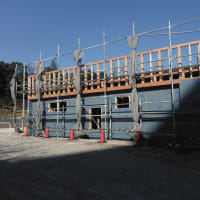
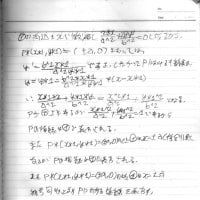

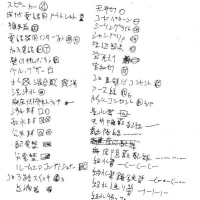

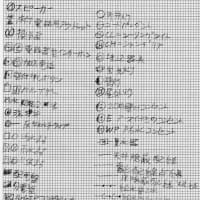
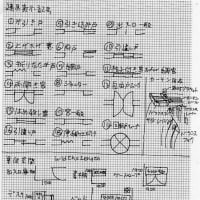
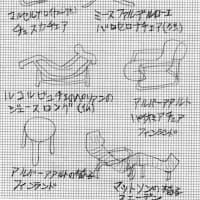

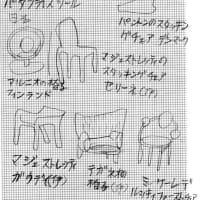
※コメント投稿者のブログIDはブログ作成者のみに通知されます